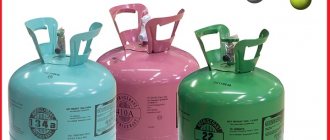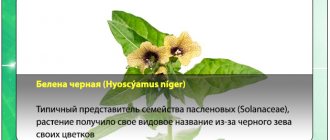Homemade preservatives are a welcome treat. As a rule, housewives prepare food in the fall. Mushrooms are used for preservation along with cucumbers and tomatoes. In winter and spring there are many cases of poisoning from pickled mushrooms. Poor quality products cause botulism. As a result of severe damage to the central nervous system, people often die.
To prevent marinades from causing intoxication, it is necessary to follow the technology for their preparation. When the first signs of mushroom food poisoning appear, appropriate measures must be taken to alleviate the condition of the victim. To do this, you will need to familiarize yourself with the main principles of providing medical care at home.
The principle of the development of food poisoning caused by pickled mushrooms
Any food poisoning will not bring anything good to a person. At a minimum, these are problems with the gastrointestinal tract. As for botulism, severe consequences cannot be avoided. This type of poisoning is characterized by the entry of pathogenic bacteria and toxic substances into the body. It will not do without the most common microorganisms: staphylococci, streptococci, clostridia or anaerobic bacteria. In order for them to reproduce, an appropriate environment and conditions are necessary:
- Poor quality products
- Improper heat treatment of mushrooms,
- Failure to comply with the rules for processing glass containers and lids for canning,
- Failure to comply with sanitary and hygienic requirements when preparing or storing canned food,
- Poor sealing of pickled mushrooms,
- Consumption of products after the expiration date,
- Violation of the integrity of canned food.
The edibility of homemade marinades is also influenced by the choice of mushrooms. If a person cannot distinguish a poisonous species from a non-poisonous one, then there is a high probability that a toxic product will end up in canned food. The poison usually does not disappear after heat treatment, and a person can become seriously poisoned.
Once bacteria and toxins reach the intestines, they are absorbed into its walls. Intoxication occurs due to the fact that microorganisms multiply rapidly and produce toxic substances. There are toxins that can affect the lymph nodes.
The body’s reaction manifests itself instantly: the immune defense is triggered. First of all, lymphocytes with basophils and neutrophils begin to fight toxins. Basophils must neutralize the inflammatory process. Lymphocytes activate antibodies that can fight toxins, and neutrophils capture bacteria.
Microorganisms have evolved, they have developed their own way of attacking the immune system. Toxins from the intestines are absorbed into the blood and affect the central nervous system. By all indications, we can conclude that this is not quite similar to simple food poisoning. At the same time, dehydration occurs - loss of a large amount of fluid. Canned food poisoning causes severe intoxication.
Features of pathogenesis in botulism
Botulism is a deadly disease. The clinical picture is observed in a person who has been poisoned by canned food. The causative agent of the disease is an anaerobic bacterium. Microorganisms multiply quickly without access to air if heat treatment is insufficient.
During storage of the product in the cellar, a fairly large amount of toxin accumulates in it, which can affect the central nervous system. When canned food is opened, almost all microorganisms die. Botulinum toxin remains in the pickled product, which is considered a potent poison. A dangerous substance, having penetrated the body, has an effect on the central nervous system, manifested in the following complex:
- The mechanism of neuromuscular signal transmission is inhibited.
- The parasympathetic nervous system is inhibited and the sympathetic nervous system is activated.
- Hypoxia occurs in the brain.
- Paralysis develops.
Clinical picture of botulism
Having eaten a dangerous marinade, a person feels the first signs of illness after half an hour. Sometimes your health may worsen 2 hours after consuming a spoiled product. The poisoned person develops symptoms of poisoning:
- Fatigue.
- The level of performance is rapidly falling.
- My head is spinning and my ears are ringing.
- The person feels sick and vomits.
- There is a feeling of heaviness in the stomach.
- My head starts to hurt badly.
- Aching or spasmodic pain is felt in the abdomen.
- Diarrhea with particles of undigested food.
- Dry skin and mucous membranes.
- Intense thirst.
- The frequency of contractions of the heart muscle increases, breathing becomes more frequent.
- Low-grade fever.
Symptoms indicating the development of botulism
When a poisoned person develops botulism, damage to the central nervous system is indicated by such signs as:
- Pale skin.
- Retention of urination.
- Flatulence and severe gas formation.
- Weakness in the limbs.
- Rapid shallow breathing.
- High pressure.
- Double vision or diplopia.
- Drooping of the upper eyelid on one or both sides.
- Feeling of dryness in the mouth.
- The voice changes.
- The tongue is weakening.
- The activity of facial expressions decreases.
- Paralysis sets in.
Important! In cases where the poisoned person has problems with vision, the respiratory system, or paralysis, he needs medical attention.
A little history
Botulism in mushrooms is deadly.
The cause of botulism today, as a rule, is low-quality homemade canned mushrooms. Until the mid-twentieth century, when there was no large-scale preparation (there were no suitable containers, special rolling machines and tin lids), the source of the terrible disease was spoiled fish (dried and salted), as well as sausage. By the way, the name of the disease comes from the Latin word “botulus”, which means “sausage”.
History has preserved an episode when in Belgium three dozen musicians, invited (ironically) to play at a funeral, almost went to the next world themselves after treating themselves to homemade ham. However, three still could not be saved, and doctors took a long time to nurse several more people. But it was then that doctors managed to produce the first immune serum, which subsequently saved many hundreds of people affected by botulism.
What is botulism in mushrooms
Pathogenic bacteria live in hermetically sealed canned mushrooms without oxygen, producing a deadly poison. Doctors say that even 0.035 milligrams of this substance is a dose sufficient to cause death. The dangerous toxin is extremely resistant to acids, as well as to large amounts of salt used in canning. The poison is not afraid even of boiling: three to five hours on the stove will not give the expected disinfecting effect.
Botulism, provoked by spoiled canned mushrooms, occurs at varying degrees of speed - after four hours or after three days. Doctors note that the rapid course of the disease is especially dangerous. Among its symptoms, which help to make a more accurate diagnosis, is blurred vision (this does not happen with ordinary poisonings). Later, the patient may lose speech, muscle paralysis will change his appearance beyond recognition, and the main cause of death is respiratory arrest. In any case, regardless of the speed of development of the disease, time works against a person, and medical help must be sought immediately.
According to statistics, 84 percent of people with botulism ate home-made canned mushrooms. The remaining percentage is “on the conscience” of the sausage and homemade meat preparations.
Canned mushrooms made industrially are usually above suspicion because high-temperature methods of sterilizing mushrooms are used in their production.
First aid
In case of intoxication with preserved mushrooms, you should act as soon as possible. The first steps in such situations should be:
| Action | Description |
| Eliminating the source of poisoning from the intestines | This can be done with an enema. It is important to remember that the water in the enema should be at room temperature: this prevents the strong absorption of toxins into the intestinal walls. |
| Eliminating poisoned food from the stomach | The patient needs to drink at least three glasses of water and then press on the root of the tongue to induce vomiting. Repeat this until all the poisonous mushrooms come out with the vomit. |
| Eliminating the source of poisoning from the intestines | This can be done with an enema. It is important to remember that the water in the enema should be at room temperature: this prevents the strong absorption of toxins into the intestinal walls. |
| Preventing toxins from entering the blood and body tissues | This can be done with the help of sorbents, which will remove poisons from the body naturally. |
| If necessary, resuscitation | If the patient has lost consciousness, he needs to perform indirect cardiac massage along with artificial respiration. |
| After the above measures, the patient should be wrapped in a warm blanket, constantly given water to drink to avoid dehydration, and kept at rest. | |
About the root cause, or where botulism comes from in mushrooms
Where does the causative agent of a dangerous disease appear in a harmless glass jar?
The most common reason is poorly washed and poorly processed mushrooms. Infection of fungi occurs through the soil. The bacillus Clostridium botulinum has a very wide distribution area, and the spores it produces are surprisingly resistant to various negative environmental influences. No moisture? And it is not necessary! High temperature, up to 120 degrees Celsius? No problem. Neither ultraviolet rays nor treatment with any disinfectants are dangerous. Spores can remain in the soil for years, without reacting in any way to the change of seasons, and, once in a tin can, reveal their treacherous essence “in all its glory.” Just a microscopic piece of contaminated soil in a jar is enough for its contents to become deadly.
In a confined space, in the absence of atmospheric air, the causative agents of botulism very quickly become active and grow in number.
The most favorable temperature for them is 35 degrees. This means that storing canned mushrooms outside the refrigerator makes the danger of poisoning obvious.
Do you know how to protect yourself from botulism in fish?
And also, what foods remove toxins from the body?
Experts warn that poisonous bacteria rarely capture the entire contents of the jar. Usually they are grouped in nests, which means that poisoning may not threaten everyone who has tried the mushrooms, but only those in whose spoon the ill-fated “nest” ended up. This makes it difficult for doctors to diagnose the disease: everyone ate the same thing, but only one person got sick. Maybe mushrooms have nothing to do with the disease? Finding the causes of the disease can take precious time.
Stages of the disease
So, experts give a positive answer to the question of whether you can be poisoned by oyster mushrooms. Symptoms of the disease appear gradually. 1-4 hours after eating the product, a slight malaise occurs. This is the stage of hidden intoxication. Then signs are observed indicating disturbances in the functioning of the gastrointestinal tract.
This condition usually lasts from 5 to 8 hours. After this stage, temporary improvement occurs. However, experts say that it is imaginary. In severe cases, death as a result of complications of intoxication occurs on the 2-3rd day of illness. Therefore, it is necessary to provide assistance to the person as quickly as possible. And it is better to consult a doctor in time to avoid dangerous consequences.
Botulism in salted and pickled mushrooms
pay attention to the appearance of the jar.
The risk of mushroom poisoning is much higher if you are dealing with pickled or salted products. Fried and boiled boletus, boletus, and chanterelles do not pose such a danger. This is why some radical doctors recommend abandoning pickling in favor of other types of mushroom processing.
If you are still going to pickle mushrooms, competent technology for processing forest gifts can reduce the risk. First of all, you cannot roll up jars with metal lids: under them, bacilli isolated from atmospheric oxygen will begin to do their dirty work. The solution is to give preference to plastic lids, they are safer in this situation.
Often, buyers are tempted by sellers at markets and markets with pickled or salted mushrooms in rolled up jars (“Everything is sterile, safe!”). It is very difficult for a city person who cannot wander through the forest in search of mushrooms to resist such a temptation, but he must! After all, even if products prepared with one’s own hands may turn out to be dangerous to eat, let alone those prepared by who knows what hands. Who guarantees that the mushrooms have been properly cleaned from soil, moss, grass and leaves? What if poisonous bacilli are salted and pickled along with your favorite saffron milk caps and buttermilk?
We recommend reading: Can you be poisoned by honey mushrooms?
Also read: Can you get poisoned by champignons?
The most important thing is that there are no signs by which you could question the safety of salted or pickled mushrooms in a glass jar - healthy color, beautiful appearance. The only effective way is to do a laboratory analysis. But this, perhaps, is the case when the skin does not justify the polish.
How to avoid botulism when canning mushrooms
It is better to salt in wooden tubs.
The simplest and most effective way is to do without hermetically sealed jars when canning. For example, it is best to salt milk mushrooms or trumpet mushrooms in wooden tubs or similar containers.
If you can preserve mushrooms, follow a number of simple rules:
- carefully clear your forest spoils of pine needles and soil;
- Wash the mushrooms thoroughly several times, preferably under running water;
- Before marinating, boil the mushrooms twice, and be sure to drain the first water;
- steam or boil lids and jars;
- salt and vinegar in the marinade are needed in sufficient quantities, since the acidic environment can protect the activity of poisonous bacteria.
Clinical manifestations
Symptoms of intoxication from poisoning with conditionally edible, wild and artificial oyster mushrooms will be the same. Manifestations are nonspecific; gastroenteritis comes first: nausea, vomiting, abdominal pain, diarrhea.
Sometimes there may be an increase in temperature. Gastrointestinal disorders can lead to dehydration, which will be manifested by dry skin, increased heart rate, decreased blood pressure, and dizziness.
If the mushrooms were collected along the highway, then most likely their pulp contains a large amount of heavy metal salts. Then the above symptoms will be accompanied by more severe disorders - convulsions and breathing problems, a decrease in the amount of urine, which indicates a deterioration in kidney function.
How to preserve properly
In order for harvesting from the gifts of the forest to only please you, you need to engage in canning responsibly, without neglecting any “little things”. Do-it-yourself in the recipe is not allowed - if you are supposed to put a certain amount of salt in the marinade and use a certain amount of citric or acetic acid, you must strictly follow these recommendations.
If it is possible to autoclave the mushrooms, do so. This method will very well protect your homemade preparations.
Use the old-fashioned way of sealing jars - parchment paper: it will provide access to atmospheric oxygen and will not allow harmful bacteria to “raise their heads”.
Avoid recipes where mushrooms are poured with boiling marinade, but not boiled or boiled. This may be hazardous to your health. If you are still confident in this recipe and it has “never let you down,” then at least keep the mushrooms prepared in this way in the cold for ten days and only then use them for food. In general, do not store it for a long time, it is a perishable product.
You should store jars of butter and milk mushrooms where there is no light and it’s cold. If you live outside the city, then in the cellar. If you are a city dweller - in the refrigerator. The temperature should not exceed six degrees Celsius.
And another important thing: even under ideal storage conditions, it is advisable to eat them within a year, no later. Otherwise, the mushrooms may still spoil.
Before serving the mushrooms, take the time to boil them for half an hour in advance. Or you can use them not as an independent snack, but as a semi-finished product - fry or bake with the addition of some other products.
Nutritional value of fruits
Before discussing the dangers of the crop we are considering, let us pay attention to the beneficial properties and rich chemical composition of this mushroom variety. Of course, oyster mushrooms are considered one of the most healthy, dietary, tasty, and also budget mushrooms. In addition to the mild taste and pleasant aroma, the fruiting bodies are enriched with a huge amount of minerals and vitamins. When consuming oyster mushrooms, our body receives:
All of the listed microelements are necessary for the proper functioning of vital systems of the body, primarily the cardiovascular and gastrointestinal tract.
The high value of the product allows mushrooms to replace all kinds of vegetables and even meat and seafood, which is very attractive for vegetarians, as well as those who adhere to religious, health or sports diets. Another huge advantage of oyster mushrooms is that even a small amount of fruit eaten quickly makes you feel full, although the mushrooms themselves are low in calories - only 43 kcal per 100 grams of raw product.
The chemical composition of the product has medicinal properties; decorative cosmetics, pharmaceuticals, as well as all kinds of tinctures and extracts used in alternative medicine are created on the basis of mushrooms.
It is important to know! People concerned about their health should know that only a few varieties of oyster mushrooms are healthy, and some of them are considered conditionally edible, which means they can cause serious food poisoning. If the mushroom picker is not confident in his knowledge, it is worth preparing in advance for the outing and studying what the safest and most popular, edible members of the family – oyster mushrooms – look like. The rest are not worth collecting. If you didn’t find it in the forest, you can find it in the nearest store.
Signs of botulism in canned mushrooms
What signs should cause you alarm if you “by eye” determine the quality of your mushroom preparations before serving:
- the solution in which the mushrooms are located has turned from transparent to cloudy;
- the metal lid is swollen (experts call this phenomenon “bombing”);
- Tiny bubbles rush from the bottom of the jar to the lid.
Although we must keep in mind that even products that are ideal at first glance, without all the listed dangerous signs, can pose a threat to your health: such a dangerous and cunning enemy is botulism.
Symptoms of poisoning
Signs of oyster mushroom poisoning may vary in different cases. What symptoms will appear depends on what led to the intoxication.
If poisoning occurs after eating improperly canned mushrooms, the victim will experience the following symptoms:
- a strong increase in body temperature (occurs sharply and suddenly);
- nausea and vomiting;
- loose stools;
- convulsions or disturbance of consciousness. Such signs may develop against the background of dehydration caused by repeated vomiting.
If intoxication occurs as a result of botulism caused by a violation of the technology for preparing and storing dishes with oyster mushrooms, the patient will experience the following symptoms:
- the appearance of increasing abdominal pain, concentrated in the navel area;
- after half an hour, nausea and the urge to vomit are added to the pain syndrome;
- vision temporarily deteriorates, objects are seen blurry and indistinct;
- joint and muscle pain is observed;
- swallowing becomes painful.
In cases where poisoning has occurred with oyster mushrooms that grew in a polluted environmental environment and absorbed chemical fumes and exhaust gases, the following symptoms are observed:
- severe feeling of nausea or repeated vomiting;
- drowsiness;
- feeling of pressure or squeezing in the back of the head;
- headache.
Salted, dried mushrooms and botulism, at what temperature does botulism in mushrooms die
Salted mushrooms will not pose a danger if you observe certain periods of aging before eating:
- after a week, but not earlier, you can eat so-called hot pickled mushrooms;
- after five to six days - dry salted saffron milk caps;
- a month later – dry salted milk mushrooms;
- after one and a half - a wave of dry salting.
If you hurry and start consuming salted mushrooms before the specified time, there is a high probability of contracting botulism.
It is also important to stir the salted mushrooms in the jar from time to time, ensuring air circulation, which is lethal to botulism bacilli.
As for temperature, the lethal threshold for poisonous bacilli is 125 degrees. At home, if you do not have an autoclave, it is impossible to provide such a strict temperature regime.
Dried mushrooms are safe from botulism. The main thing is to be sure that only high-quality, non-poisonous mushrooms are sent for drying. Therefore, as in the case of pickled mushrooms, you should never buy them from unfamiliar sellers.
Find out how dangerous it is toadstool poisoning, and how does it threaten human health?
Anyone who picks mushrooms on their own needs to know this, the symptoms and causes of mushroom poisoning.
Treatment of mushroom intoxication
Therapy in a hospital hospital setting, like first aid, largely depends on the cause of the development of intoxication. If possible, try to provide the medical personnel with the mushrooms themselves, preferably along with a jar. If there is none, tell in detail what mushrooms were eaten, where they were collected or purchased, in what condition they were eaten, whether there was rust on the jar or a bulging lid. Even a minimal amount of information can help in selecting appropriate treatment.
In case of poisoning with expired mushrooms
Food poisoning is perhaps the most harmless of mushroom poisonings. It is treated with detoxification and rehydration of the body with solutions of glucose, Ringer, Reamberin, Hemodez, Trisol, Disol, etc. The intake of sorbents also continues. Together with them, antibiotics are used that act on the intestinal microflora: Nifuroxazide, Ciprofloxacin, Furazolidone, etc. In the absence of contraindications, gastric lavage is performed using a gastric tube, and a cleansing enema is given.
For botulism
Intensive therapy for botulism should be carried out according to the following algorithm:
- Using a gastric tube, the stomach is rinsed to cleanse food debris and toxins.
- Intestinal dialysis allows you to get rid of part of the toxin in the intestinal lumen and blood. It is carried out using a 5% solution of regular table soda.
- To combat the toxin, a special anti-botulinum antitoxic serum is administered.
- Solutions for detoxification and rehydration (glucose solution, Ringer's, Reamberin, Hemodez, Trisol, Disol, etc.) are administered intravenously;
- Administration of antibiotics both orally and intravenously.
- Oxygen therapy is used to prevent and treat breathing problems.
- Supports heart function, breathing and fights damage to the nervous system.
When exposed to mushroom toxins
Poisoning with poisonous mushrooms requires immediate treatment. It is divided into nonspecific and specific (administration of an antidote). Non-specific activities include:
- gastric lavage through a gastric tube;
- performing a cleansing enema;
- intravenous infusions of detoxification agents;
- carrying out hepatoprotective therapy through the use of succinic acid, Heptral;
- hemodialysis to remove toxins from the blood;
- maintaining vital body functions and combating complications.
Antidotes for the most common poisonous mushrooms:
- pale toadstool - silibinin (Legalon), a decoction of spotted milk thistle;
- fly agaric - atropine;
- talker - atropine;
- cobweb - there is no specific antidote;
- galerina - there is no specific antidote;
- line – vitamin B6 (pyridoxine);
- fiber - atropine;
- lepiota – glucose, thiosulfate, dyes;
- poisonous boletus - atropine;
- entoloma – unknown;
- false honey - unknown;
- pig - unknown;
- greenfinch - unknown.
You can always use Unithiol as a universal antidote.










